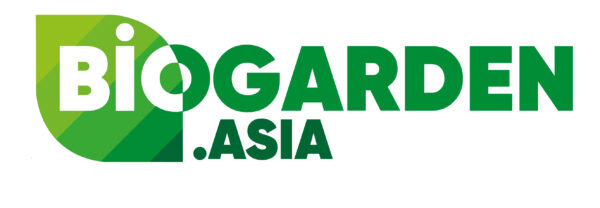No products in the cart.
NEWS
Types of Cattle Feed: When to Feed Them and How They Differ
Cattle owners come to us every day needing simple, actionable advice about the different types of cattle feed that are available. What they need is straightforward advice about what to feed their cattle, when, and why.
If you have these questions too, then read on.
What, Exactly, Do Beef Cattle Eat?
In this article, we’re talking specifically about beef cattle (a.k.a. cows). Some cattle are easier to feed than others. Some require more feed and some need feed that provides more (or less) nutrients than others.
Most of a cow’s life is spent eating grasses and hay. During the spring and summer, when the grass grows plentifully, beef cattle eat more pasture grasses. During the late fall and through the winter cattle are fed hay. In a perfect world, this rotation—grass in the growing season and hay through the fall and winter—would be enough.
The problem is that several factors affect the protein and energy content of grass and hay, which change depending on the season and the sun.
For example, summer pasture grasses are high in protein at the beginning of the summer, but the protein content declines rapidly towards the middle of the summer.
During a drought or in the winter, pasture grass is severely lacking in energy (calories). The harsh weather also causes cows to graze far less. In fact, this lack of grazing time is in most cases a more significant cause of your cattle’s insufficient energy consumption than the low-quality winter pasture grass.
In short, while your herd does get some nutrients and energy from grasses and hay, it’s often not enough. That’s why cattle need supplemental feed.
When Do Cattle Need Supplementary Feed?
As we’ve seen, various factors affect the nutrients and energy found in pasture grasses and hay. It’s both a quantity issue and a quality issue.
Knowing these factors is vital.
The QUANTITY of Reachable, Edible Forage
The quantity of forage available to your herd is paramount to their health and longevity. With insufficient forage, cattle need feed. You should take action right away if you know that your herd’s grazing will be limited.
You could simply reduce the number of cows in your herd, which would immediately reduce the amount of supplemental feeding the remaining cows require. But as the weather gets colder or the drought worsens, the opportunity to graze slowly decreases, the quality of your cattle’s diet will suffer. At some point, supplementing with feed becomes unavoidable, even if you’ve reduced the number of animals in your herd.
The QUALITY of Reachable, Edible Forage
Protein and nutrient deficiencies are the other main reasons your herd may need supplemental feed. Low-quality forage is defined as forage that contains less than 7% crude protein (CP) and has lower than 50% total digestible nutrients (TDN).
If the forage your cows have access to is low-quality, the amount they will be able to eat also drops significantly. In short, when the forage is depleted and they eat less of it, the need to give your cattle supplemental feed increases dramatically.
Don’t know the daily requirements for beef cattle? Here’s an easy rule of thumb. Cattle eat between 1.5% and 3.0% of their body weight in feed per day. Most cattle fall in the middle of this range, eating between 2.0% and 2.5% of their body weight in a single day.
The Level of Your Cow’s Body Condition
Cow body condition scoring is an easy and low-cost way to determine the body fat percentage of a cow. Why is body condition important here? Because it affects both cow and calf performance.
There are three different condition types that all create different nutritional needs that you should know about:
• Low Body Condition: Low body condition equals low fat, and cows with low-fat levels have a significantly increased need for supplemental feed.
• Moderate Body Condition: Cattle with moderate body condition will need less supplemental feed. Sometimes they need no supplemental feed at all.
• High Body Condition (a.k.a. “fleshy”): Fleshy cows have the highest amount of fat. In most cases, high body condition cows require no supplemental feed to stay healthy. It’s even possible to increase their production if you keep their foraging high. As a result, they will also be able to maintain and, under some circumstances, even increase their stored energy reserves.
What Are the Different Types of Cattle Feed?
Several different types of cattle feed are available. They all provide protein, energy, and other vital nutrients. The main types of cattle feed are cattle cubes, pelleted cattle feed, and textured cattle feed.
Cattle Cubes
Cattle cubes help your herd maintain both their weight and condition because they are formulated to supplement fair and low-quality forage. Cattle cubes provide the protein, minerals, and vitamins a cow’s forage sometimes lacks. Cattle cubes come in several different sizes, making them easier for your cattle to eat. Most cattle cubes contain 20% crude protein but also can be found in higher protein percentages.
TIP: To reduce competition among your herd, your best choice is to feed them with ground, free-choice cattle cubes.
Pelleted Cattle Feed
Pelleted cattle feed is made from a combination of grains like cottonseed meal, corn, wheat midds, and various types of other energy sources. It can vary in size but is generally small, making it more easily digestible than other feed options.
Another reason pelleted cattle feed is more digestible is the thermal process used to manufacture it. The thermal process locks in amino acids and other nutrients, providing better nutritional benefits for your cattle. Pelleting also decreases dust and waste, a valuable side benefit. A final benefit to pelleted feed is that it can also be medicated, so you can control coccidiosis while improving the feed’s efficiency and potency.
Textured Cattle Feed
Textured cattle feed is made from flaked corn, molasses, protein pellets, and several other energy sources. It is also fortified with macro and micronutrients, vitamins, and other natural ingredients. Because it contains molasses, textured cattle feed is often referred to as “sweet feed.” Today’s textured cattle feed, which uses less molasses than in the past, still provides an advantage; it makes the feed more palatable, which is good news for your cattle.
Last Words about Cattle Feed
Knowing how to feed your cattle and when to give them supplemental feed is vital to their health and the success of your operation. When choosing between the different types of cattle feed, remember that the nutrition found in the formula you choose is typically more important than the type of feed you choose.
Knowing your herd and keeping track of its overall health is paramount to your success. Choosing the correct feed with the optimal nutrition for your cattle will keep them healthy, in good body condition, and producing.



